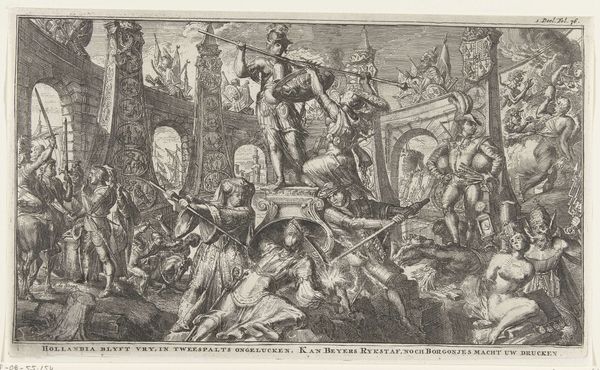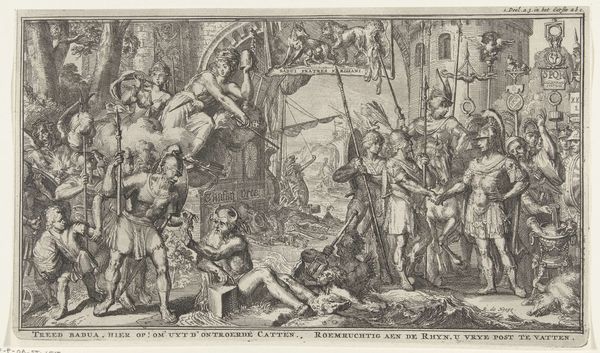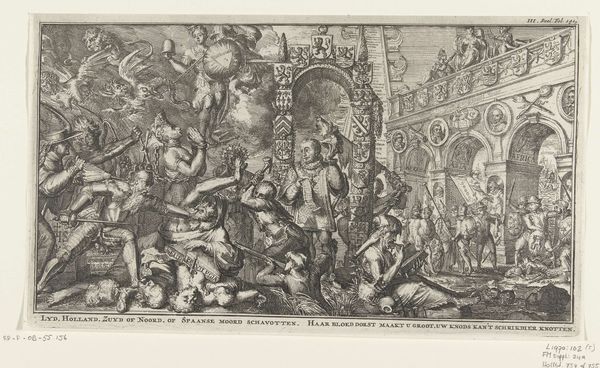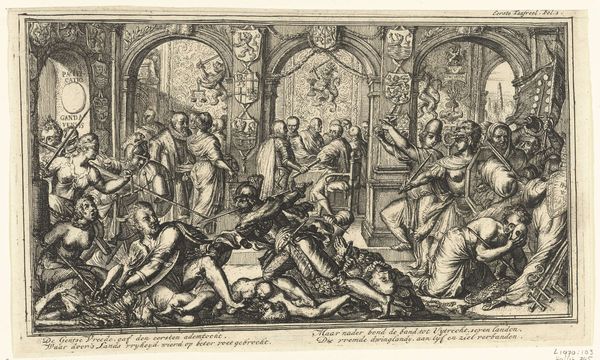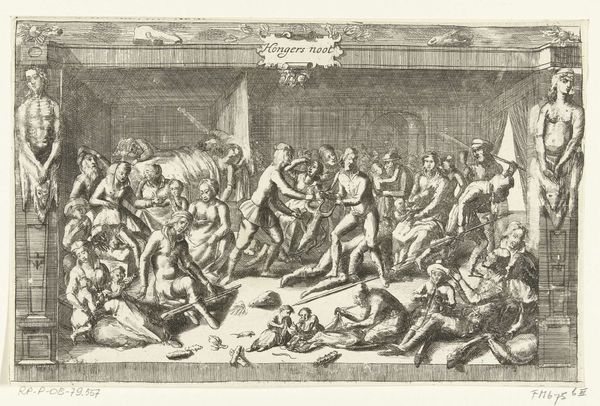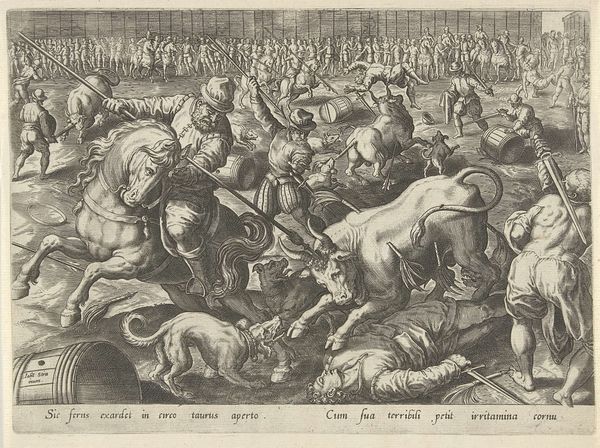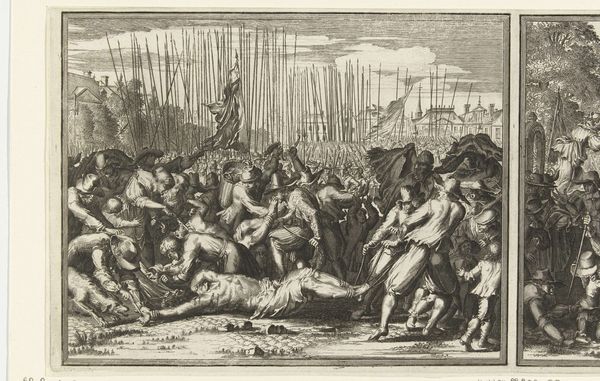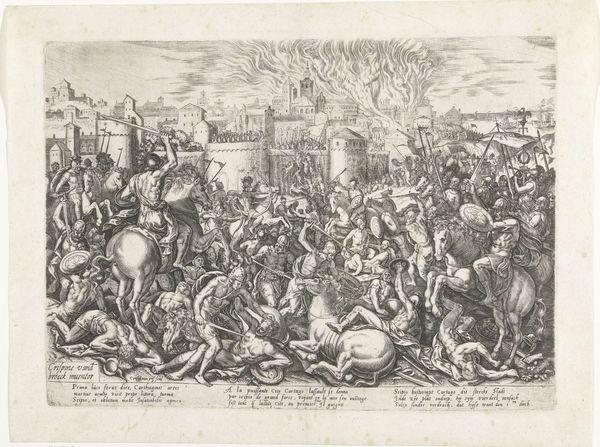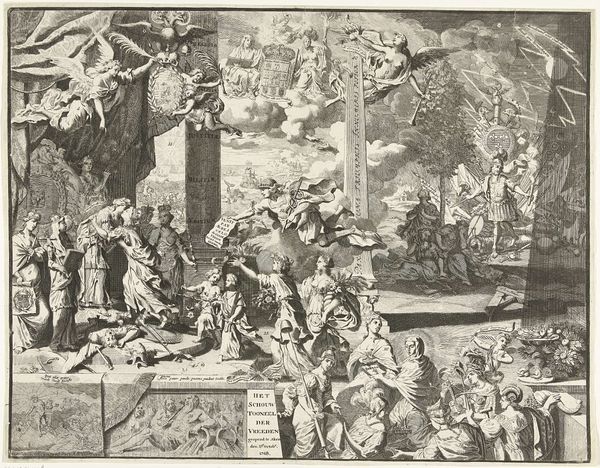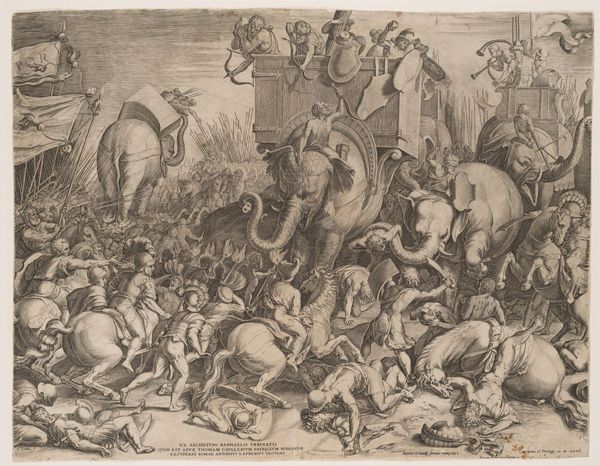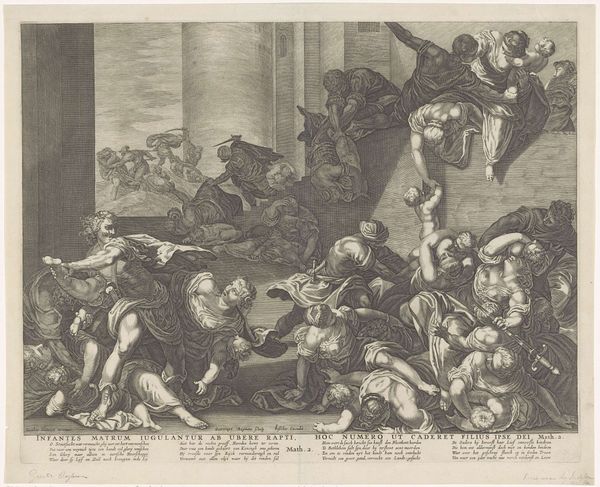
Allegorie rond de kerstening van Friesland en eendracht onder de Germanen 1704 - 1706
0:00
0:00
romeyndehooghe
Rijksmuseum
engraving
#
narrative-art
#
baroque
#
pen drawing
#
history-painting
#
engraving
Dimensions: height 176 mm, width 297 mm
Copyright: Rijks Museum: Open Domain
This engraving by Romeyn de Hooghe, created around the late 17th century, depicts the Christianization of Frisia and the unity of Germanic tribes. Notice the act of baptism in the center, juxtaposed with scenes of battle and conquest. The image is filled with symbols of power and conversion. The act of baptism itself, an ancient ritual, echoes across time from early Christian art to the Renaissance and beyond. The symbolism of water, purification, and rebirth remains a potent force, a visual echo resonating through centuries of religious and cultural expression. We can see such echoes in other pieces where this symbol reappears with varying cultural and historical context, like the Renaissance paintings and the early Christian mosaics. The image's violence and conversion suggest a collective memory of conflict and change, a psychological drama played out on the stage of history, engaging viewers on a subconscious level. The cyclical progression of conquest, conversion, and unity resurfaces throughout history, constantly evolving.
Comments
No comments
Be the first to comment and join the conversation on the ultimate creative platform.
